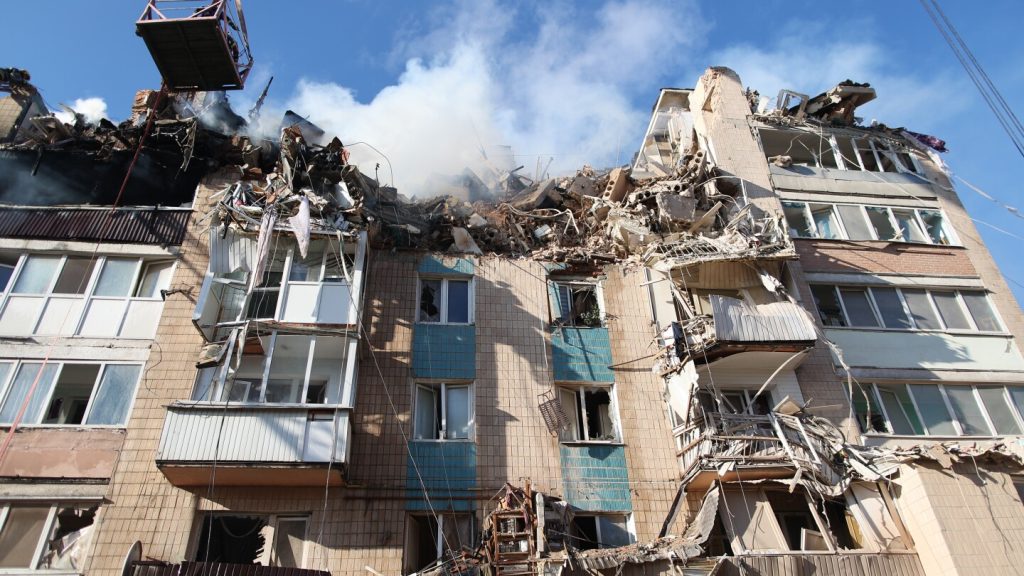Listen to the article
Former President Donald Trump has presented a 28-point draft proposal aimed at ending Russia’s war in Ukraine, according to documents obtained by The Associated Press. The proposal, which has been presented to officials in Kyiv, was reportedly developed through collaboration between Washington and Moscow.
The comprehensive peace plan includes terms that many analysts consider favorable to Russia, including provisions for Ukraine to cede territory and permanently forgo NATO membership. The draft outlines a complex arrangement of security guarantees, territorial concessions, and economic commitments designed to create a framework for ending the two-year conflict.
Under the proposal, Ukraine would maintain its sovereignty but would be required to enshrine in its constitution that it will never join NATO. Similarly, NATO would codify in its statutes that Ukraine would not be admitted in the future. The Ukrainian military would be limited to 600,000 personnel, and NATO forces would be prohibited from stationing troops within Ukraine’s borders.
The territorial provisions represent perhaps the most controversial aspects of the plan. According to the document, Crimea, Luhansk, and Donetsk would be recognized as “de facto Russian,” including by the United States. Kherson and Zaporizhzhia regions would be “frozen along the line of contact,” essentially creating a de facto recognition of current battle lines. Ukrainian forces would be required to withdraw from parts of Donetsk that they currently control.
In return, Russia would pledge non-aggression toward Ukraine and European nations, codifying this commitment in law. A comprehensive non-aggression agreement would be established between Russia, Ukraine, and Europe, with the stated intention of settling “all ambiguities of the last 30 years.”
The economic dimensions of the proposal are extensive. The plan calls for the creation of a Ukraine Development Fund to rebuild the war-torn country, with investments in technology, infrastructure, and resource extraction. About $100 billion in frozen Russian assets would be directed toward Ukrainian reconstruction, with the United States receiving 50% of profits from these investments. European partners would contribute an additional $100 billion.
For Russia, the agreement offers potential reintegration into the global economy. Sanctions would be lifted in stages, and Russia would be invited to rejoin the G8. The United States and Russia would establish a long-term economic cooperation agreement covering energy, natural resources, and technology sectors.
The Zaporizhzhia Nuclear Power Plant would resume operations under International Atomic Energy Agency supervision, with electricity production split equally between Ukraine and Russia.
Security guarantees for Ukraine would come with significant conditions. If Ukraine were to invade Russia or launch missiles at Moscow or St. Petersburg “without cause,” the guarantees would be invalidated. Conversely, if Russia were to invade Ukraine, all global sanctions would be reinstated, and territorial recognitions would be revoked.
The proposal also addresses humanitarian concerns, calling for the exchange of all prisoners and the return of civilian detainees and children. Both nations would implement educational programs promoting cultural tolerance and rejecting Nazi ideology and activities.
The implementation of this agreement would be overseen by a “Peace Council” headed by Trump himself. The document specifies that after all parties agree to the memorandum, a ceasefire would take immediate effect as forces retreat to agreed positions.
While the document represents the most detailed peace proposal to emerge since the conflict began in February 2022, its reception in Ukraine remains unclear. Many of the provisions align more closely with Russian objectives than with Ukraine’s stated goals of full territorial restoration and the right to determine its own security arrangements.
The timing of this proposal comes as the conflict approaches its third year with no clear resolution in sight, and as U.S. policy toward Ukraine remains a contentious issue in American politics.
Fact Checker
Verify the accuracy of this article using The Disinformation Commission analysis and real-time sources.




6 Comments
While the goal of ending the conflict is admirable, this plan seems heavily tilted in Russia’s favor. Requiring Ukraine to forgo NATO membership and cede territory is a non-starter. A more balanced approach is needed to have any chance of success.
This 28-point plan appears quite comprehensive, but the territorial provisions are very problematic. Giving up Crimea, Luhansk, and Donetsk would be an enormous sacrifice for Ukraine. I’m skeptical this would be acceptable to the Ukrainian government.
Interesting proposal, though it seems to heavily favor Russia. Ceding territory and permanently forfeiting NATO membership are major concessions for Ukraine. I wonder if this plan has any realistic chance of gaining traction on both sides.
This comprehensive peace plan raises a lot of questions. The territorial concessions and military restrictions on Ukraine are highly questionable. I wonder what the reaction will be from the Ukrainian government and their Western allies.
From a neutral perspective, this draft plan does seem to have some merit in terms of outlining a comprehensive framework. However, the territorial concessions and restrictions on Ukraine’s sovereignty and defense capabilities are highly concerning. More equitable terms would be needed.
While a peaceful resolution is the ultimate goal, this proposal seems to place an outsized burden on Ukraine. Limiting their military and prohibiting NATO forces within their borders could leave them vulnerable. I hope a more balanced solution can be found.